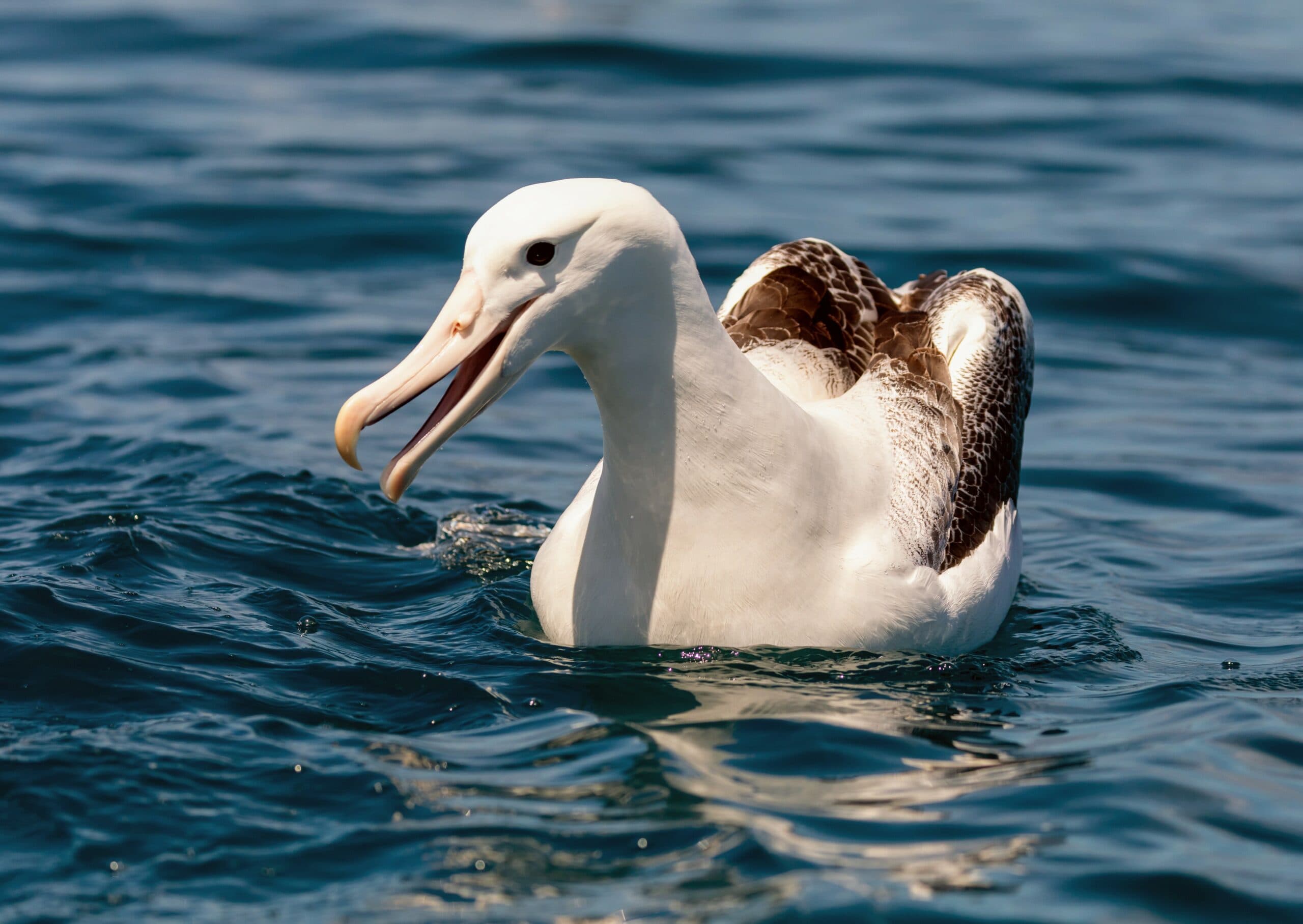
Albatrosses can dive much deeper than previously thought
A new study led by the University of Oxford has found that black-browed albatrosses (Thalassarche melanophris) can dive up to 62 feet (19 meters) into the sea in pursuit of their prey, and can stay under water for up to 52 seconds – three times the maxima previously recorded for this species.
“Albatrosses are the iconic aerial wanderers of the oceans, supremely adapted for long-distance dynamic soaring flight. Perhaps because of this they are considered poorly adapted for diving in contrast to many smaller shearwater and petrel relatives, despite having amphibious eyes, and an a priori mass advantage for oxygen-storage tolerance,” wrote the study authors.
“Modern biologging studies have largely confirmed this view, casting doubt on earlier observations using capillary tube maximum depth gauges, which may exaggerate depths, and emphasizing albatrosses’ reliance on near-surface feeding.”
By using accelerometers, depth sensors, and GPS technology, the researchers studied the diving behavior of the albatross population of New Island (one of the Falkland Islands), and found that they can reach much more impressive depths in pursuit of prey than previously estimated.
Clarifying these issues is highly important for the conservation of these magnificent seabirds. According to the scientists, 15 of the 22 albatross species are currently at risk of extinction. One of the key drivers of their decline is accidental catch in the hooked, baited fishing longlines used by commercial fisheries to trap large oceanic species such as tuna.
Since albatrosses were previously considered to be surface feeders, traditional approaches to protect them have only paid attention to the initial sinking of the fishing lines, without taking into consideration their possible bycatch during their deep dives.
“A better understanding of the unobserved behavior of the albatross and other endangered seabirds is essential to conservation efforts,” said study co-author Dr. Oliver Padget, a zoologist at the University of Oxford. “That black-browed albatrosses are physically capable of such deep dives will now need to be considered when thinking about the effectiveness of mitigation strategies that rely on the species being restricted to the surface.”
Moreover, the scientists noticed that black-browed albatrosses did not dive at night, suggesting that they rely on vision to track shoals of fish in the depths of the sea. “We found that deep diving was restricted to daylight hours,” said Dr. Padget. “So one potential mitigation could be for pelagic long lines to be set at night when albatross might be less likely, or able, to chase baits and become caught.”
The study is published in the journal Current Biology.
—
By Andrei Ionescu, Earth.com Staff Writer












